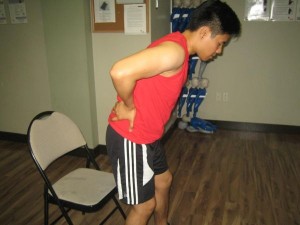The spine or backbone is composed of 24 vertebrae that are separated into four regions namely cervical, thoracic, lumbar and pelvic. Throughout the years, degenerative back diseases have affected millions of individuals in all corners of the globe. These conditions occur once the joints responsible for movement start to deteriorate due to wear-and-tear as well as the normal aging process.
Take note that the vertebrae are positioned on top of each other and separated by the discs that are characterized for their rubbery texture. These discs provide support while at the same time absorb shock every time the individual moves. The facet joints are responsible for providing movement by allowing rotation. Once degeneration occurs, the facet joints could no longer align properly while the fluid between the joints starts to diminish. The moment these circumstances occur, the bones are likely to strike one another and cause pain and discomfort. There are first aid care measures that can be provided to help provide relief.
Spondylosis
Spondylosis is the degeneration of the discs present between the vertebrae. This condition can be detected through an X-ray in which the space usually found between the bones has lessened. Once this condition develops, the disc is likely to undergo herniation and result to back pain.
The treatment for spondylosis typically involves the application of a warm compress along with medications to help minimize the pain and inflammation. Rehabilitation can also help relieve the pain. Based on studies conducted, regular stretching can help reduce the back pain in most cases.
Osteoarthritis

Osteoarthritis is a condition that affects the joints. The symptoms of this condition include pain, inflammation and tenderness in the joints. In some cases, an individual can experience locking and creaking of the joints.
Some of the common causes include accidents and genetics that can lead to damage to the cartilage that lubricates and supports the joints. A clear indication of osteoarthritis is that once the bones are exposed due to the deterioration of the cartilage, it can promote reactive bone growth that can trigger more pain.
Spinal stenosis
Spinal stenosis is another degenerative back disease that is characterized by the manifestation of calcium deposits in the ligaments of the back. This can lead to the narrowing of the spinal cord and can lead to an increase in the force on the spinal cord or on any of the surrounding nerves. Take note that spinal stenosis is typically caused by infection, accidents and tumors.
Disc herniation
Once the spinal disc that is present between the vertebrae protrudes, it can lead to disc herniation. The condition is one of the common causes of constant lower back pain in adults. The moment the discs are injured, the spinal cord and the nerves present in the back are compressed. The protrusion can occur to a point in which the soft, jelly-like material ruptures.
